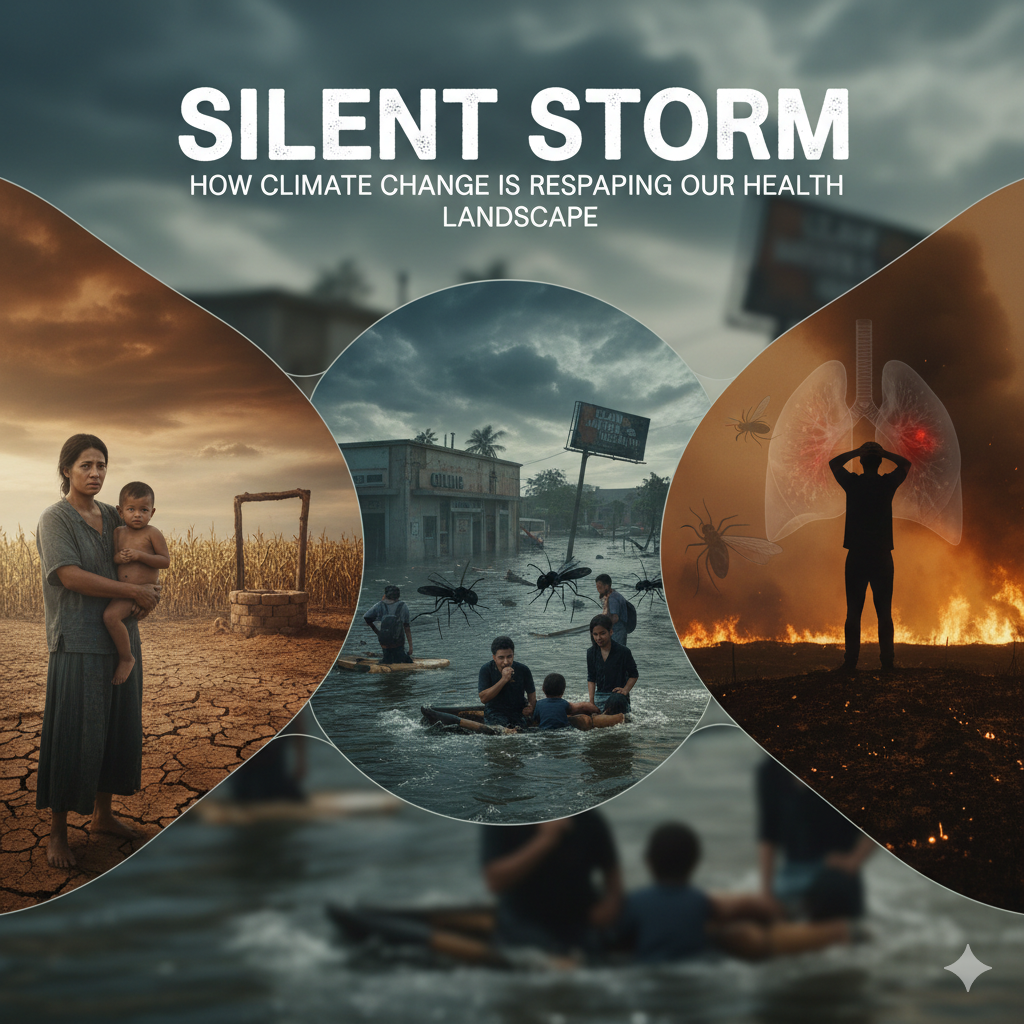The crisis of a warming planet is no longer a distant environmental concern; it is a clear and immediate public health emergency. The intricate web of planetary systems is unraveling, and the consequences are landing squarely on human well-being. Understanding the direct effects of climate change on health is the critical first step toward building a resilient future.
Extreme Weather: The Immediate Threat
One of the most brutal effects of climate change on health stems from the escalation of extreme weather. We see this most clearly in heatwaves, which are becoming more intense, frequent, and prolonged. These events lead directly to a surge in heat-related morbidity and mortality, including heatstroke, heat exhaustion, and worsening cardiovascular and respiratory diseases. For the elderly, children, and people with chronic illnesses, these heat spikes can be fatal.
Beyond heat, intensified storms, hurricanes, and floods cause immediate physical trauma, injuries, and loss of life. But the damage doesn’t stop when the waters recede. The displacement of entire communities creates long-term health crises, overwhelming local healthcare systems and triggering severe mental health burdens like anxiety, depression, and post-traumatic stress disorder (PTSD) among survivors.
Shifting Disease Landscapes
A warming world fundamentally alters the natural boundaries that once contained infectious diseases. The changing temperatures and rainfall patterns create ideal conditions for vectors—like mosquitoes and ticks—to expand their geographic range and lengthen their active seasons. This is one of the most concerning effects of climate change on health globally, allowing diseases like dengue fever, malaria, and West Nile virus to emerge in new populations who lack immunity or preparedness.
Similarly, altered weather patterns contribute to the spread of waterborne pathogens. Floods can contaminate drinking water sources and sewage systems, leading to outbreaks of cholera and other diarrheal diseases. The interconnectedness of climate, environment, and human biology means that infectious disease control becomes far more complicated with every degree the planet warms.
Air, Water, and Food Security
The invisible air we breathe is becoming visibly compromised. Higher temperatures drive up the formation of ground-level ozone, a powerful lung irritant that exacerbates conditions like asthma. Furthermore, hotter, drier conditions fuel devastating wildfires, releasing vast plumes of particulate matter and toxic gases that travel thousands of miles, impacting respiratory and cardiovascular health far from the flames.
At the same time, the climate threat undermines the very foundations of health: our food and water. Prolonged droughts and erratic floods disrupt agricultural cycles, leading to crop failures, reduced yields, and compromised food security. This, in turn, can worsen malnutrition and starvation in vulnerable regions. Water scarcity and the contamination of water sources—due to both drought and flooding—further compound the issue, making access to safe drinking water a growing public health priority.
Building Resilience
The cascading effects of climate change on health demand immediate and coordinated action. As public health professionals, policymakers, and communities, we must work to mitigate the root cause by aggressively transitioning to clean energy. Simultaneously, we must strengthen health systems to be resilient and adaptive. This means investing in robust disease surveillance, implementing effective early warning systems for heatwaves and air quality, and ensuring that every community has access to quality healthcare that can withstand the silent storm.

